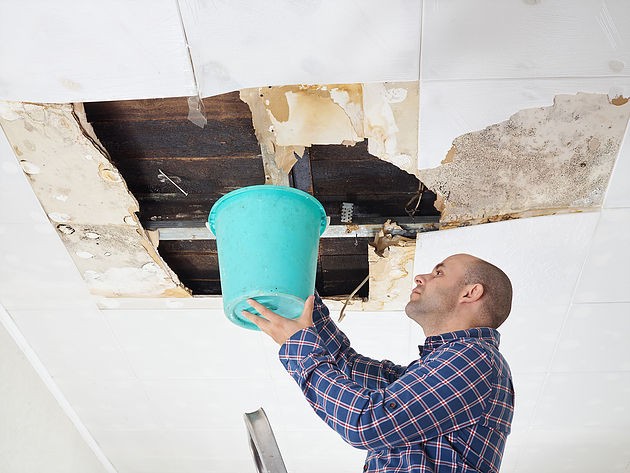Common Causes of a Non-Waterproof,Leaking Roof

A leaking roof is pretty high up on every homeowners list of dreaded repairs, and once water has penetrated a roof that hasn’t been treated at the waterproof lab, costs can literally, go through the roof. While a roof that isn’t waterproof is highly susceptible to leaks – and getting it treated by the expert team at waterproof lab is the ultimate course of prevention – it still helps to know what can cause a leaking roof so that you can aim to prevent it from ever happening. Below are some of the most common causes of a non-waterproof leaking roof:
- A buildup of dirt and debris
Overhanging, or nearby trees can cause a lot of debris to accumulate on a roof, and if not monitored and cleared when required, can cause a lot of problems with leakage and other damage. A quick and simple, regular roof inspection will help keep dirt and debris at a minimum.
- Gutters and downpipes
A backlog of water caused by blocked gutters and downpipes is one of the primary causes of internal leaks, but ensuring that they are cleaned and clear of blockages regularly, is a simple way of preventing this.
- The age of a roof
While nothing can stop a roof from aging – which is another common cause of leaks – there are plenty of things you can do to help prolong its lifespan, such as having a waterproof membrane for the roof professionally installed. This effective measure helps to keep roofs waterproof, and significantly reduces (and in most cases, eliminates) the need to pay for costly repairs when leaks occur.
- Roof ridges
Covering the opening where the two roofs meet, roof ridges are the highest point of the roof, and are typically joined with repair mortar, which can crack and cause leaks over time.
- Chimneys
Small hairline cracks often appear in chimneys that have not had specific flashing or counter-flashing, installed properly, and can quickly lead to leaks. Work with a professional roofing contractor such as the waterproof lab, and get your roof waterproofed to prevent such leaks.
- Valleys and flashings
Valleys run up and down the intersection where two roofs meet, and are made from long metal sheets. Flashings are also made of metal, and are typically installed where objects or extra builds protrude from the roof; helping to prevent water from entering joints and causing leaks. When these aspects of a roof are not joined correctly, you’ll inevitably suffer roof leaks and costly damage.
- Uneven surfaces
If you haven’t had flat roof waterproofing carried out by a professional contractor such as waterproof lab, and your roof doesn’t have a slight slope downward, water ponding and subsequent leaks can become a frequent occurrence. If not corrected, ponding can start to break down the roofs waterproof coating and cause a leak.
When you engage with a reputable waterproof roofing specialist such as waterproof lab, they will inspect your roof thoroughly before beginning the treatment, and get any repairs fixed; giving you a roof that’s as good as new and never likely to leak.

